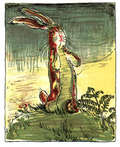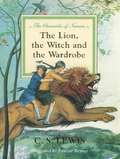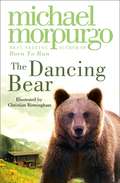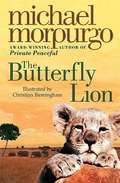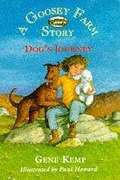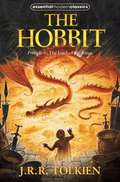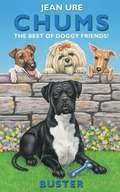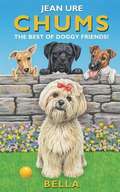- Table View
- List View
Butterfly lifecycle 3 (pupa) (UEB Uncontracted)
The pupa has its head to the right of the page and the tail end to the left. At the bottom of the page is a scale. There is a locator dot shown, which will be at the top left of the page when the image is the right way up. In the right centre of the image the circular shape of the covered eye can be found. Down from this is a covered antenna which goes left to the centre of the pupa. The large triangular area on the right of the pupa is where the wing is developing. The left half of the pupa is its developing abdomen with a small spiracle in the centre of each segment allowing it to breathe. Towards the top of each segment is a small decorative golden stud.
Butterfly lifecycle 4 (adult emerges from pupa) (Large Print)
This image shows an opened pupa hanging on the left and in the centre of the page is the recently emerged adult hanging onto the right side of the pupa. There is a locator dot shown, which will be at the top left of the page when the image is the right way up. Its head is in the top centre and the tail in the bottom centre of the page. They are surrounded by an image border. The empty casing of the pupa hangs head down with the bottom half opened up. At the top centre of the page is the end of one of the adult's two antennae, it is still soft from being in the pupa and has not yet straightened and stiffened. To the left of the base of the antenna one of its two large eyes is showing on its head. Down from the head is the thorax with two of its four wrinkled wings sticking out to the right. The upper, larger fore wing has an orange band in the middle and two white spots in the top centre. The smaller hind wing is down from this and has an orange edge on the right. Three of its six multi-jointed legs are to the left of the abdomen, which it uses to hold onto the pupa. Down from this is the segmented abdomen.
Butterfly lifecycle 4 (adult emerges from pupa) (UEB Contracted)
This image shows an opened pupa hanging on the left and in the centre of the page is the recently emerged adult hanging onto the right side of the pupa. There is a locator dot shown, which will be at the top left of the page when the image is the right way up. Its head is in the top centre and the tail in the bottom centre of the page. They are surrounded by an image border. The empty casing of the pupa hangs head down with the bottom half opened up. At the top centre of the page is the end of one of the adult's two antennae, it is still soft from being in the pupa and has not yet straightened and stiffened. To the left of the base of the antenna one of its two large eyes is showing on its head. Down from the head is the thorax with two of its four wrinkled wings sticking out to the right. The upper, larger fore wing has an orange band in the middle and two white spots in the top centre. The smaller hind wing is down from this and has an orange edge on the right. Three of its six multi-jointed legs are to the left of the abdomen, which it uses to hold onto the pupa. Down from this is the segmented abdomen.
Butterfly lifecycle 4 (adult emerges from pupa) (UEB Uncontracted)
This image shows an opened pupa hanging on the left and in the centre of the page is the recently emerged adult hanging onto the right side of the pupa. There is a locator dot shown, which will be at the top left of the page when the image is the right way up. Its head is in the top centre and the tail in the bottom centre of the page. They are surrounded by an image border. The empty casing of the pupa hangs head down with the bottom half opened up. At the top centre of the page is the end of one of the adult's two antennae, it is still soft from being in the pupa and has not yet straightened and stiffened. To the left of the base of the antenna one of its two large eyes is showing on its head. Down from the head is the thorax with two of its four wrinkled wings sticking out to the right. The upper, larger fore wing has an orange band in the middle and two white spots in the top centre. The smaller hind wing is down from this and has an orange edge on the right. Three of its six multi-jointed legs are to the left of the abdomen, which it uses to hold onto the pupa. Down from this is the segmented abdomen.
Butterfly lifecycle 5 (adult fills and dries wings) (Large Print)
This image shows the butterfly viewed from the side with its head on the right and its tail on the left. There is a locator dot shown, which will be at the top left of the page when the image is the right way up. On the right one of its two large eyes is showing with one of its two antennae above it. To the left of the head is the thorax with two of its four wings sticking up. To the right is the fore wing with two patches of orange in the centre and up from them, two white spots. The hind wing is to the left, it has a silver spot near the thorax and a grey band on the edge to the left. The wings are still soft bags which will flatten as the veins fill and stretch them flat and hard. Left from this is the segmented abdomen. Three of its six multi-jointed legs can be found, upon which it stands.
Butterfly lifecycle 5 (adult fills and dries wings) (UEB Contracted)
This image shows the butterfly viewed from the side with its head on the right and its tail on the left. There is a locator dot shown, which will be at the top left of the page when the image is the right way up. On the right one of its two large eyes is showing with one of its two antennae above it. To the left of the head is the thorax with two of its four wings sticking up. To the right is the fore wing with two patches of orange in the centre and up from them, two white spots. The hind wing is to the left, it has a silver spot near the thorax and a grey band on the edge to the left. The wings are still soft bags which will flatten as the veins fill and stretch them flat and hard. Left from this is the segmented abdomen. Three of its six multi-jointed legs can be found, upon which it stands.
Butterfly lifecycle 5 (adult fills and dries wings) (UEB Uncontracted)
This image shows the butterfly viewed from the side with its head on the right and its tail on the left. There is a locator dot shown, which will be at the top left of the page when the image is the right way up. On the right one of its two large eyes is showing with one of its two antennae above it. To the left of the head is the thorax with two of its four wings sticking up. To the right is the fore wing with two patches of orange in the centre and up from them, two white spots. The hind wing is to the left, it has a silver spot near the thorax and a grey band on the edge to the left. The wings are still soft bags which will flatten as the veins fill and stretch them flat and hard. Left from this is the segmented abdomen. Three of its six multi-jointed legs can be found, upon which it stands.
Butterfly lifecycle 6 (Adult) (Large Print)
This image shows the butterfly viewed from above. Its body is in the centre of the page with the head at the top of the page. There is a locator dot shown, which will be at the top left of the page when the image is the right way up. There is a scale at the bottom of the page. In the top centre of the image are the tips of two antennae which stretch down to the head. It has two large eyes showing with two antennae stretching out above it. Down from the head is the thorax with two wings to the left and right. The fore wings in the top half of the page have an orange band in the middle. The wing tips to the left and right have bright white patches and spots. The hind wings have a band of orange on the outer edge to the left and right. All wings have tiny patches of white on the edge in places and some small patches of blue near the edges but these are too small to be seen on the tactile image. Down from this is the segmented abdomen. The legs are not shown.
Butterfly lifecycle 6 (Adult) (UEB Contracted)
This image shows the butterfly viewed from above. Its body is in the centre of the page with the head at the top of the page. There is a locator dot shown, which will be at the top left of the page when the image is the right way up. There is a scale at the bottom of the page. In the top centre of the image are the tips of two antennae which stretch down to the head. It has two large eyes showing with two antennae stretching out above it. Down from the head is the thorax with two wings to the left and right. The fore wings in the top half of the page have an orange band in the middle. The wing tips to the left and right have bright white patches and spots. The hind wings have a band of orange on the outer edge to the left and right. All wings have tiny patches of white on the edge in places and some small patches of blue near the edges but these are too small to be seen on the tactile image. Down from this is the segmented abdomen. The legs are not shown.
Butterfly lifecycle 6 (Adult) (UEB Uncontracted)
This image shows the butterfly viewed from above. Its body is in the centre of the page with the head at the top of the page. There is a locator dot shown, which will be at the top left of the page when the image is the right way up. There is a scale at the bottom of the page. In the top centre of the image are the tips of two antennae which stretch down to the head. It has two large eyes showing with two antennae stretching out above it. Down from the head is the thorax with two wings to the left and right. The fore wings in the top half of the page have an orange band in the middle. The wing tips to the left and right have bright white patches and spots. The hind wings have a band of orange on the outer edge to the left and right. All wings have tiny patches of white on the edge in places and some small patches of blue near the edges but these are too small to be seen on the tactile image. Down from this is the segmented abdomen. The legs are not shown.
The Velveteen Rabbit (or How Toys Become Real)
by Margery Williams William NicholsonOriginally published in 1922, The Velveteen Rabbit has delighted young readers for nearly a century. The story follows a young boy who’s given a stuffed rabbit as a Christmas gift. After the rabbit befriends other nursery toys, he comes to the realization that he wants to become a real rabbit. Eventually, the boy becomes ill and is relocated; his room is then disinfected and all the boy’s toys are thrown out, including the velveteen rabbit. The rabbit sheds a real tear causing a fairy to appear and turn him into a real rabbit. This edition includes full-color illustrations, with image descriptions,from the original illustrator, William Nicholson. Each image accompanies the text to enhance young readers’ experience and immerse them in this captivating story. Reprinted hundreds of times since its initial publication, The Velveteen Rabbit is a timeless children’s classic lets young readers experience the true magic of friendship, love, and being honest with oneself. In 2007, the book was named one of "Teachers’ Top 100 Books for Children” by the National Education Association.
Element, Compound and Mixture (Diagram PDF)
by Katie WalkerI have created this resource for a year 7 student with Achromatopsia. This diagram enables the student to identify the difference between an element (1 type of atom), a compound (more than 1 atom chemically bonded) and a mixture (more than one substance). I hope this helps with resource helps.
13 Amp plug and heater (UEB Contracted)
by Rnib BookshareThis page shows a labelled diagram of a UK 13 Amp plug connected to an electric heater. The plug has its top removed to reveal its internal wiring and the heater has its cover removed. There is a locator dot shown, which will be at the top left of the page when the image is the correct way up. The heater is to the left of the page. It has its cover removed. Its components are attached to a square backing plate that fills most of the left of the page. At the top, are the two heating elements made of coiled wire connected to the switch to the right and to the mains cable down and right. The earth wire is screwed to a terminal on the bottom of the heaters backing plate. The thick cable extends from the bottom left of the heater to where it is clamped to the plug on the right of the page. The three wires emerge from the cable and connect to the three screw terminals marked neutral, earth and live. The fuse is shown just down the page from the live terminal.
13 Amp plug and heater (UEB Uncontracted)
by Rnib BookshareThis page shows a labelled diagram of a UK 13 Amp plug connected to an electric heater. The plug has its top removed to reveal its internal wiring and the heater has its cover removed. There is a locator dot shown, which will be at the top left of the page when the image is the correct way up. The heater is to the left of the page. It has its cover removed. Its components are attached to a square backing plate that fills most of the left of the page. At the top, are the two heating elements made of coiled wire connected to the switch to the right and to the mains cable down and right. The earth wire is screwed to a terminal on the bottom of the heaters backing plate. The thick cable extends from the bottom left of the heater to where it is clamped to the plug on the right of the page. The three wires emerge from the cable and connect to the three screw terminals marked neutral, earth and live. The fuse is shown just down the page from the live terminal.
Chronicles of Narnia, Book 2: The Lion, the Witch and the Wardrobe
by C. S. LewisPeter, Susan, Edmund and Lucy are evacuated to a house during the war wherein lives a vague professor. Left much to their own devices, they find a way into another world - Narnia - and discover Aslan, the lion king in hiding.
Pathways to Literacy, Year 4, Stage 5, Set B: Baboushka (PDF)
by Moira AndrewChristmas is such a busy time! Cleaning, cooking, making, mending... Those were the things that kept Baboushka busy. So she missed her chance to travel with the wise men. Then she found a way to bring Christmas love to everyone. A traditional tale of warmth and wisdom.
The Dancing Bear (PDF)
by Michael MorpurgoA gentle and moving story of a young girl and her bear, from bestselling children's author Michael Morpurgo. High in the mountains, in a tiny village, an abandoned bear cub is adopted by a lonely orphan child. Soon they are inseparable.
The Butterfly Lion (PDF)
by Christian Birmingham Michael MorpurgoA lyrical and moving tale of a young boy growing up in Africa, and his lifelong friendship with a white lion. All my life I'll think you you, I promise I will. I won't ever forget you. Bertie rescues an orphaned white lion cub from the African veld. They are inseparable until Bertie is sent to boarding school far away in England and the lion is sold to a circus. Bertie swears that one day they will see one another again, but it is the butterfly lion which ensures that their friendship will never be forgotten.
Dog's Journey: A Goosey Farm Story (PDF)
by Gene KempWhen Tim and Widget first move to Goosey Farm, they find it difficult to make friends at their new school, but everything else is wonderful.
Dog's Journey: A Goosey Farm Story (PDF)
by Gene KempWhen Tim and Widget first move to Goosey Farm, they find it difficult to make friends at their new school, but everything else is wonderful.
The Hobbit, or, There and Back Again (PDF)
by J. R. R. TolkienThe Hobbit is the unforgettable story of Bilbo, a peace-loving hobbit, who embarks on a strange and magical adventure. A timeless classic. Bilbo Baggins enjoys a quiet and contented life, with no desire to travel far from the comforts of home; then one day the wizard Gandalf and a band of dwarves arrive unexpectedly and enlist his services - as a burglar - on a dangerous expedition to raid the treasure-hoard of Smaug the dragon. Bilbo's life is never to be the same again. Seldom has any book been so widely read and loved as J.R.R. Tolkien's classic tale, 'The Hobbit'. Since its first publication in 1937 it has remained in print to delight each new generation of readers all over the world, and its hero, Bilbo Baggins, has taken his place among the ranks of the immortals of fiction.
Chums, Book 1: Buster (PDF)
by Jean UreFour stray dogs all with a story to tell of their rescue and how they came to live at Munchy Flats Cottage with their people Flossie and Jo.
Chums, Book 2: Bella (PDF)
by Jean UreFour stray dogs all with a story to tell of their rescue and how they came to live at Munchy Flats Cottage with their people, Flossie and Jo.

